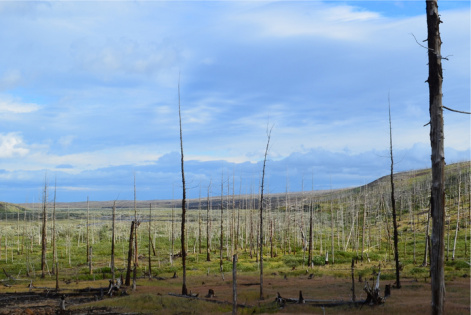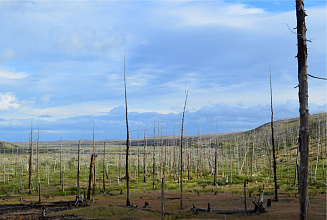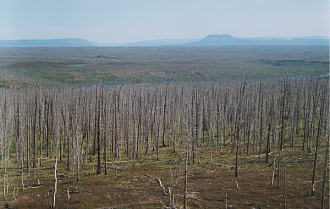Scientists: the extent of pollution in the Arctic is larger than we expected
25 September 2020 г.

Siberia, taiga, extreme north. For many people, these words are synonymous with a virgin nature which inaccessible to an ordinary person. Is it really? Taiga, covering a wide belt of vast territories of Eurasia and North America, is the largest terrestrial biome in the world. It makes a significant contribution to the stabilization of the Earth's climate. At the end of the last century, scientists drew attention to the fact that, since the 70s of the last century, the thermal regime, on which the ecosystem productivity in northern forests directly depends, has less and less influence on tree growth. A similar pattern was observed for several large regions of the world located above the Arctic Circle, including such highly polluted areas as the vicinity of large industrial centers, for example, Norilsk. The phenomenon is called the “divergence problem”. In its most general form, the problem facing scientists can be formulated as follows: "Why is the growth of trees in the Northern Hemisphere becoming less and less dependent on temperature?"
An international team of scientists, most of them being researchers from the V.N. Sukachev Institute of Forest as part of KSC SB RAS and Siberian Federal University, conducted an unprecedented study in the north of the Krasnoyarsk Region, trying to solve the problem of the inconsistency between the temperature variation and the radial growth of trees. First of all, the scientists recorded a large-scale mortality of trees in the area of the largest northern town on the planet, Norilsk, with the mortality peaks observed in the 60-80s of the last century. Moreover, a sharp increase in the concentrations of sulfur, copper and nickel in wood samples is characteristic of the same time period. However, the most interesting result is not related to the mortality of trees in the immediate vicinity of the emissions of the industrial giant complex. A decrease in the tree growth in northern latitudes is also observed in areas which are rather far from Norilsk.
The estimates obtained show that this was due to a decrease in the intensity of incoming solar radiation in northern latitudes, associated with atmospheric pollution, while the pollution sources can be located thousands of kilometers from the Arctic regions. This phenomenon is called the "Arctic haze". Specific weather conditions are responsible for reducing the transparency of the atmosphere, contributing to the transfer of air masses from south to north and increase in the concentration of pollutants in the air.
To understand the reasons for the decline in tree growth, scientists used the Vaganov-Shashkin tree ring growth model, which is widely known in the scientific community. First, they compared the results of theoretical calculations with the width of tree rings in different years. It turned out that until about the middle of the last century, the trees had grown exactly as predicted. Later, in the 1970s, a systematic discrepancy between the observations and theory is observed, indicating the presence of an external factor negative for the tree growth. The scientists managed to find a consistency in the data of the tree ring growth simulated on a computer and measurements of the tree samples, when taking into account a decrease in the transparency of the atmosphere and in the amount of solar radiation coming to the surface. In northern latitudes, this factor turned out to be so significant that it outweighed the positive effect of the observed temperature increase.
“In our study, everything starts from Norilsk and ends with fairly global conclusions on the impact of pollution (not only by Russian enterprises, but also in North America, Europe, East and Southeast Asia, as well as due to forest fires and volcanic activity) on the productivity of northern forests. The problem of the discrepancy between the growth of trees and the increase in temperatures was identified in the 90s of the last century and has not been solved yet.
Due to the fact that temperature reconstructions based on tree rings form the basis for a number of reports of the Intergovernmental Panel on Climate Change (IPCC), our work would arouse great interest not only among specialists, but also among decision-makers at the regional, state and intergovernmental levels. In fact, we are talking about the still preserved ability of tree rings to track global climate changes, and about drawing attention to the state of the Arctic ecosystems, ” says one of the authors, Doctor of Biological Sciences, leading researcher at the V.N. Sukachev Institute of Forest SB RAS and Siberian Federal University, Alexander Kirdyanov.
The study was supported by the Russian Science Foundation (project 18-14-00072).
Share:






